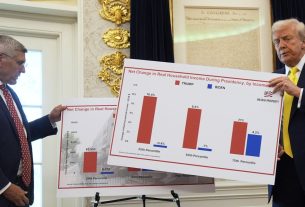By Yves Hiernaux, Co-founder and CEO of Beebole
Finance teams need to plan for growth, but so do HR teams. While the goals of the two departments can appear to be inverse, where time and money data converge, the chasm is not so vast. A push and pull between profits and employee experience may make finance and HR butt heads, but is it possible that they are working from the same data sheet? HR and finance insights both require detailed data based on employee time-cost to set a realistic project baseline.
A successful business needs to ride the wave between spend and income, but profits are only one part of the struggle. Without talented staff, businesses can’t operate. So, keeping employees happy in terms of wages, benefits and the workplace environment is sometimes a costly, but necessary spend to make.
Hiring is an increasing source of anxiety for a lot of businesses amid fierce competition for talent worldwide. 51% of businesses now plan to invest in technology to track employee experience by the end of 2024. So how can finance teams also benefit from these investments, and collaborate with HR to plan for a more prosperous future?
Budget for profits
Project time tracking reveals time-cost inefficiencies that can sometimes be hidden within accounts and projects. When unfruitful projects are a drain on resources, they aren’t contributing to profits. This can be dissatisfying for employees too. Using time as a metric, HR and finance teams can both identify opportunities to retire a project for the good of the company’s bottom line when the conditions are right.
Companies like Navteca, a Maryland-based technology services company, embrace time-tracking data and insights to predict accurate projections of pricing and deadlines ahead of the work. If the project isn’t worth the company’s time, they know from the beginning that they should not take up the work.
Hidden costs are the worst enemy of the financial planner, but they can easily happen. In fact, without the right tools to identify them, they are very common. The Cumbrian consultancy Createc is one company that needed to revise the way it tracked employee time against projects to get a better understanding of where time was being spent across 15 live projects. Now, having added reimbursable projects and sick leave into a robust project tracking system, the tech company has been able to unlock cost-efficiencies through understanding the team’s workload better.
KMAC (Kentucky Museum of Art and Craft), an American NGO did not have the option of retiring a project in the way that a business might. As it needed to adhere to strict budgetary requirements, KMAC’s success was dictated by its ability to deliver on goals without exceeding very limited spend expectations. Using time-tracking tools, it gained valuable insights into team resourcing and the true cost of its operations. The alternative would have meant shutting down. Using KMAC’s high-stakes example, HR and finance teams can use employee insights to collaborate better and produce realistic budgets.
A French automotive information company Infopro Digital used a similar strategy to calculate internal costs. It employed a single service management solution to monitor unwanted and costly overtime. Simply by having greater transparency, it was able to plan more effectively and limit additional last-minute overtime, which guaranteed employees’ abilities to observe religious festivals like Ramadan without compromise.
Optimise human capital
Unfruitful projects help no-one in business. Clients or projects that can’t seem to launch successfully create frustrations for employees who want to progress in their careers and demonstrate skill through successful projects. Too few opportunities can be very damaging for staff retention rates, which becomes a bigger issue if sustained over longer periods.
With insights that clearly highlight diminishing returns, making the decision to deprioritise a project becomes much easier for business leaders. To make the case, HR and finance teams both need the evidence to suggest it’s in the company’s best interest. Similarly, that data needs to make sense to everyone involved. Having an overview of team capacity and project profitability can illuminate hidden opportunities.
The most effective use of skills happens when they are a direct match to the task at hand. If the job is too challenging or not challenging enough, the allocation isn’t right. However, where employees have excess time or their experience does not match the work, HR can treat a problem as an opportunity to upskill for the benefit of the employee, as well as for the company. Training initiatives can be introduced to help diversify revenue streams and to engage employees to keep the best talent on board.
As a fist step, reviewing how existing employees are utilised can make a big difference to costs and employee engagement. International consultancy Optare Solutions uses time tracking insights to adjust staffing to keep costs down. With this strategy, it can serve its roster of high profile telecommunications clients within its proposed budgets.
It’s no secret that companies can bill less for junior employees. So, where the most experienced staff can be brought in to suit their skill level only, Optare Solutions was able to create experience opportunities for interns while offering a competitive rate to clients for the same quality outcomes.
Where billing is a nuisance for finance teams, it can be just as jarring for the finance teams on the client’s side. If the final bill is different than initially quoted, it can cause problems that may result in the termination of your business relationship. To manage this issue, absorbing extra work internally is not a profitable option and it can distort profit predictions for financial teams. Data-based planning using employee time insights helps businesses to plan, to resource teams appropriately and to maximise profits from the start, with no surprises for clients at the billing stage.
Plan with the workforce
Workforce capacity dictates profit yield. If the staff isn’t available to do the work, growth simply isn’t possible. As such, keeping employee workloads at 100% capacity all of the time does not necessarily mean that the business will make more money. Quite the opposite.
HR departments tend to gather the most insightful reports on employees’ workloads. The holistic view that time tracking tools give HR teams can alert them to overworked staff, existing skills gaps in the workforce and other factors relating to workforce happiness. In particular, where clusters of work can be identified, HR teams can potentially identify dissatisfaction before it is reported, or a valuable employee decides to leave.
The costs of hiring new staff is far greater than the cost of retaining good employees. Plus, it creates extra work for HR, from onboarding to advertising for roles. Financial teams rely on a consistent workforce to make accurate projections for future work, including spend and profits. So, HR and finance teams have a shared interest in keeping employee churn to a minimum.
Using time-tracking insights to manage employee engagement, HR and finance teams can work together to execute plans for growth, rather than manage the consequences of downsizing.
Will time be the universal language of people management and money?
Individually, finance teams and HR teams use time to measure success. Hourly billing is the default measure of human capital. So, until that changes additional data based on time as a metric will be instrumental to a flourishing business.
Time and cost insights are needed to help HR and finance departments communicate their needs. Once they are able to communicate better with one another, their suggestions for cost-saving initiatives, new business propositions or hiring programmes will be much more compelling to the C-suite. As a first port of call, it’s clear that greater collaboration on data is easy to achieve and already has the potential to reduce workloads, stress and existing inaccuracies that bring HR and finance teams the most grief.



